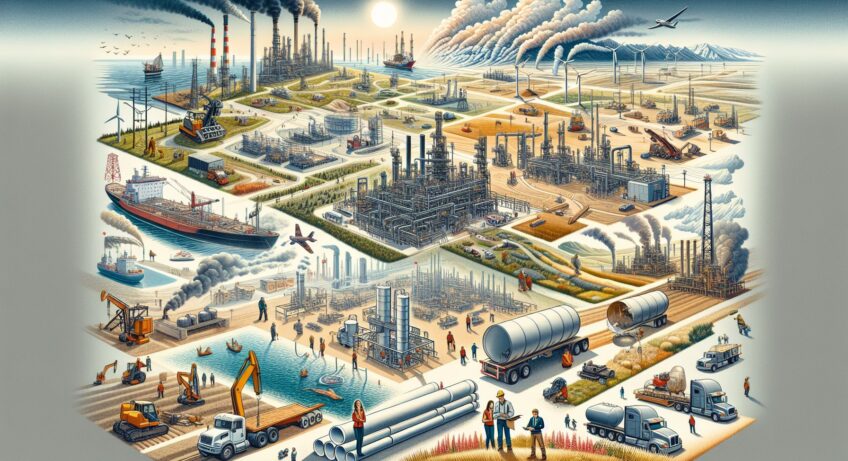Nestled in the picturesque landscapes of North America, Canada is known for its vast natural resources. Among these, the oil and gas industry stands out as a powerhouse, contributing significantly to the country’s economic growth. However, behind its seemingly straightforward facade lies a complex and ever-changing landscape that continues to perplex even the most seasoned industry experts. In this article, we will delve into the intricacies of the oil and gas industry in Canada, exploring its challenges, opportunities, and the relentless evolutionary forces that shape its destiny.
The Great Canadian Resource Boom
Canada’s oil and gas industry has experienced a series of booms and busts throughout its history. Its origins can be traced back to the discovery of petroleum in Ontario in the mid-19th century, kickstarting a relentless pursuit of this valuable resource across the nation. Over the years, advances in technology and the discovery of new reserves propelled the industry into a period of immense growth, establishing Canada as one of the largest oil producers in the world.
The Enigmatic Canadian Oil Sands
Among the key players in Canada’s oil and gas industry, the oil sands have taken center stage. Located predominantly in Alberta, these vast deposits of bitumen have revolutionized the country’s energy landscape. However, their extraction poses unique challenges. The process of separating and refining bitumen from sand requires advanced technologies and significant investments. Additionally, concerns regarding environmental impact and carbon emissions have cast a shadow over the industry.
Regulatory and Environmental Challenges
The oil and gas industry in Canada faces an intricate web of regulatory frameworks and environmental considerations. Striking a delicate balance between economic development and environmental protection is an ongoing challenge. The exploration of natural resources, like the oil sands, often evokes debates surrounding climate change, Indigenous rights, and the sustainability of fossil fuels. Navigating these complex issues requires collaboration between industry stakeholders, government bodies, and Indigenous communities.
The Technological Frontier
Innovation plays a vital role in the evolution of Canada’s oil and gas industry. As the industry faces mounting pressures to reduce environmental impact, technology offers a glimmer of hope. Advancements in methods like carbon capture and storage, as well as the utilization of clean energy alternatives, aim to promote sustainability within the sector. Moreover, digitalization and automation are transforming operations, enhancing efficiency, and streamlining processes.
Riding the Wave of Renewable Energy
While the oil and gas industry in Canada continues to dominate, a growing wave of renewable energy is reshaping the country’s energy mix. Canada is home to expansive wind and solar resources, unlocking immense potential for clean power generation. As the world shifts towards a greener future, the integration of renewable energy sources presents both a challenge and an opportunity for the oil and gas industry. Adaptation and diversification will be crucial for the industry’s long-term sustainability.
Conclusion
The oil and gas industry in Canada embodies a complex and ever-changing landscape. From its humble beginnings to the present day, it continues to shape the country’s economy and national identity. However, the road ahead is not without its challenges. Striking a balance between economic prosperity, environmental stewardship, and social responsibility requires constant adaptation and innovation. As the industry embraces new technologies and explores renewable energy alternatives, it must also address pressing environmental concerns. Only through collaboration, foresight, and a commitment to sustainability can Canada’s oil and gas industry navigate the perplexities of its future and remain a driving force in the global energy landscape.

